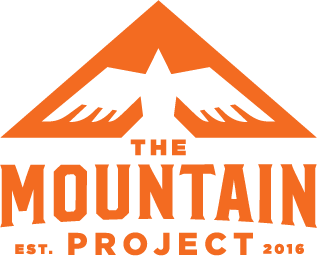
Bouldering Gym
RULES, SAFETY & ETIQUETTE
Before your first visit to the bouldering gym, please watch the video and read through the rules and etiquette.
Our gym is a small and intimate space: ALWAYS BE AWARE OF WHERE OTHER CLIMBERS ARE ON THE WALLS. Take turns when climbing in areas that are highly trafficked, on routes that cross paths, or on routes with intersecting fall zones.
Whoever starts their climb first has the right-of-way on the climbing wall. If you become aware of a conflict, yield if you are aware.
It’s natural to want to share ideas. You may feel a strong desire to offer beta (route information) to someone climbing. If so, consider first asking if they would like to receive it. Sometimes people enjoy the challenge of problem solving and the joy of unlocking sequences on their own, while other times they will gladly accept your offerings.
If bouldering, please place your chalk bags and buckets on the ground (and out of fall zones) as opposed to tossing them. Also, try to dust your hands with chalk inside of a chalk bag or chalk pot in order to contain as much excess chalk as possible.
If you use a brush poll, store it in a safe, landing-zone-free space without making it a trip hazard. Preferably, off the pad, or tucked flush against the base of the wall.
DO NOT tick holds with chalk.
If you are not on the wall or reviewing a problem, please hang out off the pads, or near the pad edges. This is to help guarantee safe landing zones and extended pad lifespans.
Keep climbing shoes off restroom floors. Other climbers don’t want to grab where your feet have been or the residue from restroom floors.
CLIMBING GYM ETIQUETTE
Please read the following carefully. This bouldering orientation is extremely important for your safety and the safety of other climbers. Ask a staff member if you would like guidance about any of the following.A fall zone is the area where someone currently climbing could fall.
Fall zones are generally defined by an imaginary 6-10 ft radius around every climber on the wall.
Since climbers are constantly moving, fall zones are always changing. Your awareness of them is vital to your safety and everyone else’s.
Climbers are focused on climbing and cannot be expected to be aware of what’s below them. Do NOT walk through an active fall zone. If they fall, you can both be injured. Wait for the other climber to finish climbing before you walk through, otherwise walk around.
Don’t climb over someone. If you fall, you can both be injured.
If you notice someone walking inside your fall zone or someone else’s, notify them to move out of it immediately.
The climbing wall terrain is always changing. Be aware of climbing holds and other features that may extend down from the wall. Take precautions to avoid walking into or standing up into any of these.
Using headphones or earbuds is weak sauce –and means you may not be able to hear others who may be trying to communicate with you. Please make sure the volume is low enough, so you can hear what is going on around you.
If you see anyone doing anything dangerous, let them (or us) know!
FALL ZONES & GENERAL BOULDERING AWARENESS
At some point in your use of the gym, you will fall while climbing.
Know your body’s abilities and what impacts you can sustain. Climb inside of your comfort zone.
As you ascend the wall, anticipate falling and how you will react. Practice falling from increasing heights until you are comfortable falling from any elevation.
If you ever feel uncomfortable falling, downclimb to a level where you are comfortable using any hold available. Nearby downclimb jugs are also available.
Every climbing facility’s padded surfaces are unique. Even if you are an experienced climber, take the necessary time to acquaint yourself with our padding in order to understand the stiffness and how it reacts when falling from different heights.
Before you start your climb, be sure that the area underneath is clear from other people, chalk bags, bottles, brush poles, etc.
When falling, DO NOT attempt to catch yourself on your feet, like a gymnast’s finish. While impressive in appearance, the padded surfaces do not offer reliable terrain and put your ankles and back at great risk…
… instead, tuck and tumble, distributing the impact over as much protected surface area of your body and over as much distance/time as possible.
